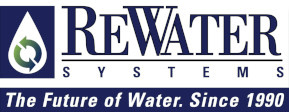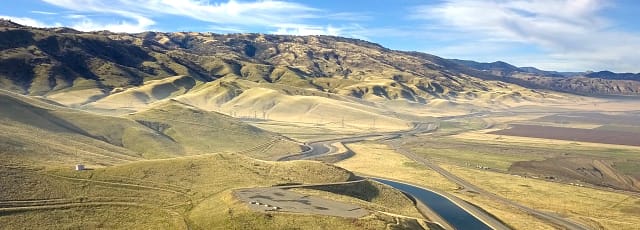ReWater® started up across and down the street from the birthplace of Silicon Valley on Addison Avenue in Palo Alto in 1990 to help California meet its water needs through robust, cost-effective, environmentally helpful “greywater” recycling irrigation systems.
ReWater worked tirelessly with California’s then bipartisan legislature, with building and environmental health officials, builders, architects, engineers, contractors, and landscapers to create a greywater irrigation system code that met everyone’s needs for beautiful, safe, sustainable landscapes.
In 1996 ReWater, moved to San Diego to help that thirsty city satisfy its one-of-a-kind federal water reuse mandate. Using US EPA’s long-established State Revolving Fund (SRF) criteria for funding water systems, in 2000 California’s State Water Resources Control Board’s SRF Branch determined that ReWater’s system qualifies for loans from the US EPA’s SRF program, which requires a system to last 20 years.
In 2009, we moved up to Thousand Oaks to better serve all southern California and ReWater’s systems evolved to integrate rain and other types of water.
ReWater doesn’t make internet systems known for breaking down and clogging, or expensive wastewater disposal systems that leave you needing a real irrigation system.
We crunched the numbers early on and determined that if every new residence in California used a ReWater system over the next 30 years, collectively those systems would provide, drought or not, the equivalent of any one of the multi-billion dollar water projects that bring water to southern California, but for a fraction of the cost and with far less environmental downsides.

ReWater’s Time-proven systems
ReWater’s recycling irrigation systems have been in operation and evolved over a very long time – over three decades. They now come with our still-easy-to-use 5th Generation Controller.
Our systems use greywater like an irrigation system is supposed to, with all the features you’ll need, up to the latest code, and with none of the programming glitches or potential internet security nightmares other companies’ systems have.
ReWater’s systems automatically supplement with city water and/or rain so your landscape gets fully watered if you aren’t producing enough greywater that day, and when you go on vacation.
And our 5th generation controllers harvest rain to satisfy Low Impact Development (LID) requirements.
Cost-effective and simple to use, ReWater’s systems provide all the features you’ll need for water recycling irrigation. Compare our controller to the Irritrol® Total Control, but using water you already bought!
If your design team wants to know more for a specific project, please call us at (eight oh five) 716-0104.
ReWater’s Early Adoption and Activism
The use of greywater was illegal when Stephen Bilson founded ReWater® Systems in Palo Alto in 1990 during one of the many droughts the western US routinely experiences.
After serving two years on the California Graywater Ad-Hoc Committee the legislature had funded to investigate greywater reuse, Mr. Bilson sponsored California Assembly Bill #3518 in 1992, which passed unanimously in both houses (almost unheard of). AB3518 resulted in our nation’s first-of-its-kind state greywater irrigation law found as California Water Code Section 14875 et seg.
In 1993, Steve Bilson received US Patent #5,217,323 on the greywater irrigation system that evolved into what is known as the ReWater® System. It’s still the only commercially available greywater irrigation system in the US that’s legal in all states.
In 1992-1994, he worked literally thousands of hours with virtually every local, regional, and state building safety and environmental health protection agency and interest group in California to help write the first state greywater irrigation code for single-family systems.
In 1995, he sponsored AB313 to allow multi-family systems, and then worked again with those stakeholders and several others to improve the code several times. Now included are multi-family and commercial systems, and rain harvesting systems. The code is now Chapter 15 of the California Plumbing Code.
For years, Mr. Bilson was ReWater’s Responsible Managing Employee for ReWater®’s landscape contractor’s license #798547 and provided hands-on supervision of numerous residential and commercial landscaping projects all using greywater and/or rain.
Mr. Bilson has also been involved in other states’ efforts to legalize greywater irrigation. He continues to warn about the failure of NSF 350-certified systems that were only approved when NSF used a “greywater” recipe that failed to include hair and lint, the biggest challenge to filters and emitters.
He’s helped clients as philosophically diverse as the Natural Resources Defense Council to the US Marine Corps, with landscapes as diverse as desert to almost tropical. He’s now responsible for more permitted i.e. legal greywater irrigation systems in California than everyone else combined.
When not at work, he’s either with his family, flying aerobatics and BFM/ACM, hunting, fishing, skiing, or somewhere in the great outdoors on another adventure.

Building Partnerships
Lately, this award winning innovator has been consulting for architects, engineers, and builders working on greywater-irrigated projects. Many of those systems are backed up with rain to satisfy Low Impact Development (LID) requirements. Some of these single-family and multi-family projects have been LEED Platinum or Gold certified.
If you’re a building professional, please call us to see how we can help your projects cost-effectively satisfy California’s increasingly greener rules.
Press and Trade
2022
Goop Magazine. Gwyneth Paltrow.
https://goop.com/food/decorating-design/building-a-sustainable-home/
2019
The Water Zone. The Toro Company.
https://waterzone.podcast.toro.com/e/dec-12/
2016
Commercial-Scale Greywater Systems: Case Studies from Orenco and ReWater
2015
Laundry to landscape: California’s drought solution?
Reuse residential greywater
Encinitas passes graywater ordinance
2014
On-site Reuse of Graywater and Stormwater: An Assessment of Risks, Costs, and Benefts
2013
American Society of Plumbing Engineers Annual Trade Show and Seminar
2011
Gray water gardening: Best practices
Water the Lawn With Your Saturday Night Bath
Two-Year Permit Approval Nightmare Finally Ends For Santa Monica Resident
ePlan: A help or a hindrance?
Water Use Efficiency and Jobs
2010
Gray matters; Water reuse systems
Irrigation and Green Industry (Weeha.com NPaper)
Greywater: Legal Liability or Untapped Resource? (BuildDirect.com blog)
2009
San Diego People Start Using Gray Water as Rationing Looms
Is Graywater in Your Future?
Guide to Sustainable Living, Ed Begley, Jr.
2008
Toro Irrigation Set To Host 2008 Watersmart Symposium
Graywater systems recycle bath, laundry water
Share a bath, save a lawn
Legal Greywater Class by Steve Bilson of ReWater® in Costa Mesa
2007
2006
2004
From graywater, green landscapes grow
Irrigate With Household Graywater
1999
City of Oceanside City Council Meeting
1994
The color gray—Regulations abound for uses of gray water
Inventive entrepreneurs—A wealth of modern-day Edisons call the Palo Alto area home


